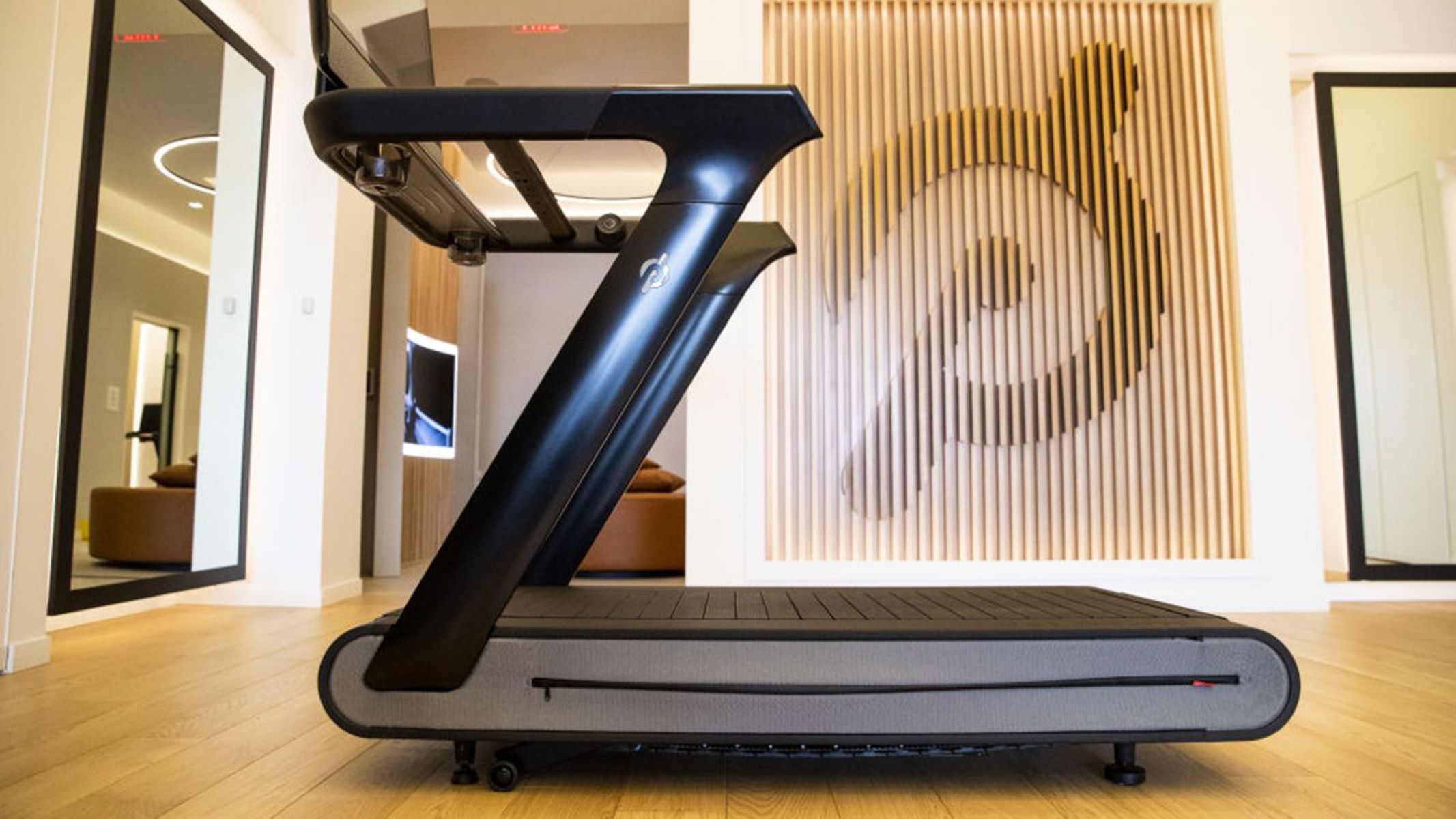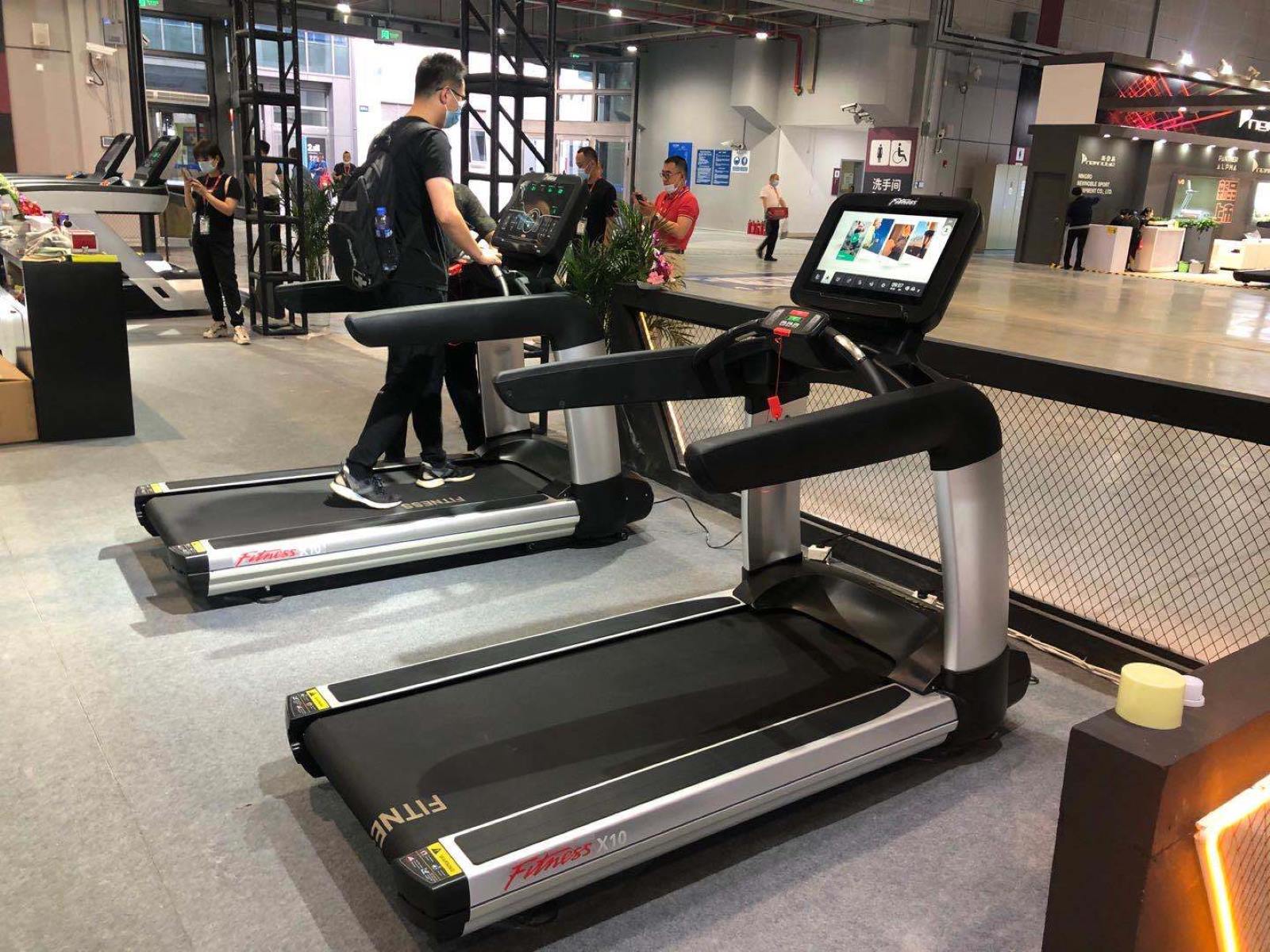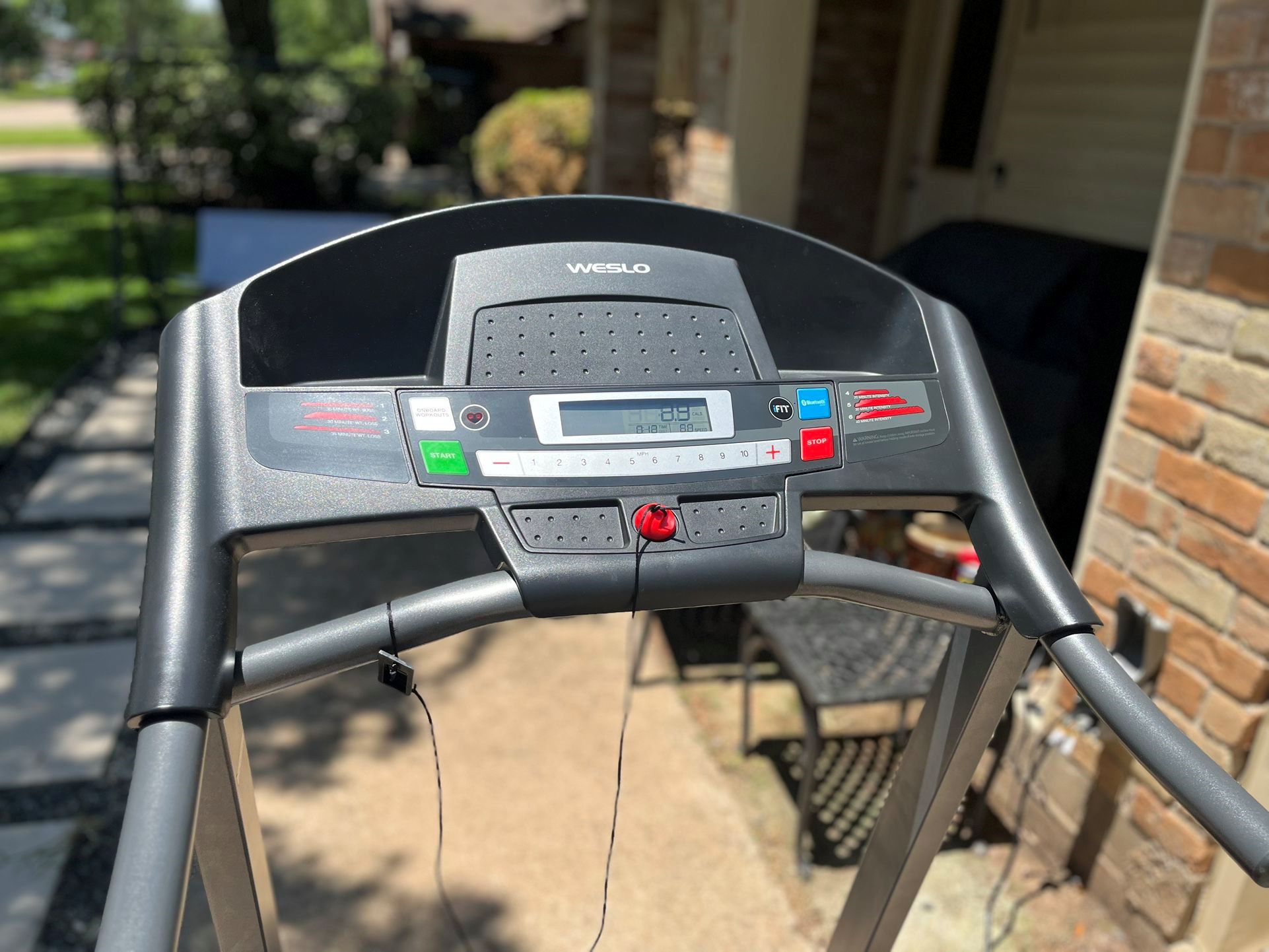Home>Misc>Featured>What Does Walking On Incline On Treadmill Do


Featured
What Does Walking On Incline On Treadmill Do
Modified: January 2, 2024
Find out what walking on an incline on a treadmill can do for your fitness goals. Discover the benefits of incline training and how it can help you achieve your desired results. Featured article.
Introduction
Walking is a great form of exercise that offers numerous health benefits. It can be done anywhere, at any time, and at any fitness level. But did you know that walking on an incline on a treadmill can take your workout to the next level?
Walking on an incline on a treadmill involves adjusting the elevation to simulate walking uphill. This simple modification can have a significant impact on your workout, giving you a more intense and effective exercise routine.
In this article, we will explore the various benefits of walking on an incline on a treadmill, including the muscles targeted, increased calorie burn, cardiovascular benefits, and impact on joint health. We will also provide some useful tips on how to make the most out of your incline walking workouts.
Whether you’re a beginner looking to incorporate more intensity into your walking routine or a seasoned fitness enthusiast searching for a new challenge, walking on an incline on a treadmill is a fantastic option to consider. Let’s dive in and discover the incredible benefits of this form of exercise.
Benefits of Walking on an Incline on a Treadmill
Walking on an incline on a treadmill offers a multitude of benefits for your overall fitness and well-being. Let’s explore some of the key advantages of incorporating incline walking into your workout routine:
- Increased Intensity: Walking on an incline increases the intensity of your workout compared to walking on a flat surface. The uphill motion engages more muscles and requires greater effort, resulting in a higher calorie burn and improved cardiovascular fitness.
- Muscle Toning: Walking uphill activates and targets different muscle groups compared to walking on a flat surface. The incline primarily works your glutes, hamstrings, calves, and core muscles, helping to tone and strengthen these areas. It can also improve your balance and stability.
- Enhanced Calorie Burn: Walking on an incline burns more calories than walking on a flat surface. The uphill motion requires increased energy expenditure, which leads to a higher calorie burn per minute. This can be particularly beneficial for weight loss or weight management goals.
- Improved Cardiovascular Health: Incline walking on a treadmill elevates your heart rate and challenges your cardiovascular system. This helps improve your heart and lung function, increases your aerobic capacity, and promotes overall cardiovascular health.
- Low-Impact Workout: Walking on a treadmill, including walking on an incline, is a low-impact exercise that puts less stress on your joints compared to activities like running or jumping. This makes it an ideal option for individuals with joint issues or those who prefer a low-impact workout.
- Variety and Challenge: Walking on an incline adds variety and a new challenge to your workout routine. It prevents boredom and keeps your workouts interesting and engaging. Plus, you can adjust the incline level to gradually increase the difficulty and continue challenging your muscles.
These benefits make walking on an incline on a treadmill an excellent choice for individuals of all fitness levels looking to get more out of their walking workouts. Whether your goal is to burn more calories, tone your muscles, or improve your cardiovascular fitness, incline walking can be an effective and enjoyable option to consider.
Muscles Targeted During Incline Walking
Walking on an incline on a treadmill engages a variety of muscle groups throughout your body. Here are the main muscles targeted during incline walking:
- Glutes: The gluteal muscles, including the gluteus maximus, medius, and minimus, are heavily activated during incline walking. The uphill motion forces your glutes to work harder to propel you forward, helping to strengthen and tone your buttocks.
- Hamstrings: The hamstrings, located at the back of your thighs, play a crucial role in incline walking. As you push off the ground to move uphill, the hamstrings work to extend your hips and flex your knees. Regular incline walking can help develop stronger and more defined hamstrings.
- Calves: Walking on an incline also targets your calf muscles, including the gastrocnemius and soleus. The calf muscles assist in pushing your body weight forward while walking uphill, which helps to strengthen and sculpt your lower legs.
- Quadriceps: The quadriceps, located at the front of your thighs, are actively engaged during incline walking. These muscles are responsible for straightening your knees and propelling you forward. Incline walking helps to tone and strengthen your quads, giving your legs a more defined appearance.
- Core Muscles: Incline walking requires you to engage your core muscles to maintain balance and stability. Your abdominal muscles, obliques, and lower back muscles work together to provide a strong and stable foundation while walking uphill.
In addition to these major muscle groups, incline walking also activates smaller stabilizer muscles, such as those in your hips, shins, and ankles. These muscles play a vital role in supporting your body and maintaining proper form during the incline walking exercise.
By incorporating incline walking into your fitness routine, you can effectively target and strengthen these muscle groups, improving overall muscular endurance, power, and the aesthetic appearance of your lower body.
Increased Calorie Burn with Incline Walking
If you’re looking to maximize calorie burn during your workouts, incline walking on a treadmill is an excellent option. Walking on an incline requires more effort and energy expenditure compared to walking on a flat surface, resulting in increased calorie burn. Here’s how incline walking can help you torch more calories:
- Higher Intensity: Walking uphill on an incline increases the intensity of your workout. The incline adds resistance, making your leg muscles work harder and expend more energy. As a result, your metabolism gets a boost, and you burn more calories during and even after your workout.
- Muscle Engagement: Incline walking targets a larger number of muscles compared to walking on a flat surface. The increased muscle activation leads to a higher calorie burn because muscles require more energy to work. As you engage more muscles, your body burns more calories to support the increased workload.
- Increased Heart Rate: Walking on an incline elevates your heart rate, increasing the cardiovascular demands of your workout. The higher heart rate stimulates your metabolism and helps you burn calories more efficiently. The intensity of incline walking can result in a significant calorie burn per minute.
- Elevated Oxygen Consumption: Incline walking demands greater oxygen consumption than walking on a flat surface. The increased demand for oxygen means your body needs to work harder to deliver oxygen to your muscles, resulting in a higher calorie burn. This process, known as excess post-exercise oxygen consumption (EPOC), can lead to continued calorie burn even after you’ve finished your workout.
- Longer Durations: Incline walking can encourage you to walk for longer durations compared to walking on a flat surface. When your workout is more challenging and engaging, you’re more likely to stay motivated and extend your exercise session. The longer you walk, the more calories you burn.
It’s important to note that the number of calories burned during incline walking depends on various factors, including your weight, intensity, duration, and fitness level. However, incline walking can generally help you burn more calories than walking on a flat surface, making it an effective option for weight loss or calorie control.
Remember, to achieve optimal calorie burn and overall health benefits, it’s important to combine incline walking with a balanced diet and an active lifestyle. Regular incline walking sessions, along with healthy habits, can contribute to your overall weight management goals.
Cardiovascular Benefits of Incline Walking
Walking on an incline on a treadmill provides numerous cardiovascular benefits that can improve your heart health and overall fitness. Let’s explore the cardiovascular advantages of incline walking:
- Increased Heart Rate: Walking on an incline elevates your heart rate, which is essential for improving cardiovascular fitness. When your heart rate increases, your heart pumps more blood, delivering oxygen and nutrients to your muscles more efficiently. Regular incline walking helps to strengthen your heart and improve its efficiency.
- Improved Aerobic Capacity: Incline walking is an aerobic exercise that raises your oxygen consumption and improves your body’s ability to use oxygen. As you walk uphill, your body adapts to the increased demands for oxygen, leading to an improvement in your aerobic capacity. This is beneficial for enhancing endurance and stamina.
- Better Blood Circulation: Walking on an incline promotes better blood circulation throughout your body. As you engage your muscles more intensely during incline walking, your blood vessels expand, allowing for increased blood flow. Improved circulation helps deliver oxygen and essential nutrients to your muscles, organs, and tissues.
- Lowered Risk of Cardiovascular Disease: Regular cardiovascular exercise, such as incline walking, helps to reduce the risk of various cardiovascular diseases. It can help control blood pressure, lower cholesterol levels, and decrease the likelihood of developing conditions like heart disease and stroke.
- Increased Fat Burning: Incline walking on a treadmill promotes the utilization of stored body fat as an energy source. The increased intensity of incline walking encourages your body to tap into fat stores for fuel, leading to improved fat burning and weight management.
- Stress Relief: Walking, in general, is known to help alleviate stress and improve mental well-being. When you incorporate incline walking into your routine, the increased intensity can result in the release of endorphins, which are known as “feel-good” hormones. This can help reduce stress and boost mood.
Regular incline walking sessions, along with a balanced diet and other forms of cardiovascular exercise, can contribute to a healthy heart, improved cardiovascular fitness, and a reduced risk of heart-related conditions. It’s recommended to consult with a healthcare professional before beginning any new exercise regimen, especially if you have pre-existing cardiovascular conditions or concerns.
Impact on Joint Health
Walking on an incline on a treadmill offers a low-impact exercise option that can be beneficial for joint health. Let’s explore the impact of incline walking on joint health:
- Reduced Impact on Joints: Compared to high-impact exercises like running or jumping, walking on a treadmill, including walking on an incline, puts less stress on your joints. The incline provides a challenging workout without the jarring impact that can potentially cause joint discomfort or injury.
- Improved Joint Stability: Incline walking engages several muscle groups, including those around your joints. Strengthening these muscles improves joint stability, reducing the risk of injuries. The controlled and controlled motion of incline walking helps to promote proper biomechanics, supporting the health of your joints over time.
- Less Strain on Weight-Bearing Joints: Walking on an incline distributes the load more evenly across your lower body. This means that weight-bearing joints, such as the knees and ankles, experience less strain compared to activities like running or high-impact exercises. Incline walking can be a suitable exercise option for individuals with joint issues or those recovering from injuries.
- Joint Range of Motion: Walking on an incline can help improve joint range of motion, promoting flexibility and reducing stiffness. The movement involved in incline walking helps to lubricate the joints and increase the flow of synovial fluid. This can be particularly beneficial for individuals with arthritis or joint conditions.
- Gradual Progression: Incline walking allows for gradual progression and customization. You can start with a lower incline and gradually increase the elevation as your joint strength and endurance improve. This allows your joints to adapt and build resilience over time, reducing the risk of overuse injuries.
While incline walking is generally considered safe for joint health, it’s still important to listen to your body and take appropriate precautions. Proper form, supportive footwear, and incorporating rest days into your workout routine are important to ensure joint protection during incline walking sessions.
If you have any pre-existing joint conditions or concerns, it’s always a good idea to consult with a healthcare professional before starting a new exercise program. They can provide personalized advice and guidance based on your specific needs and abilities.
Tips for Incline Walking on a Treadmill
To make the most out of your incline walking workouts on a treadmill, here are some helpful tips to keep in mind:
- Warm Up Properly: Before starting your incline walking session, spend a few minutes warming up your muscles. Perform some dynamic stretches or walk on a flat surface at a moderate pace to prepare your body for the upcoming workout.
- Start with a Manageable Incline: If you’re new to incline walking, begin with a gentle incline of around 3-5%. As you become more comfortable and stronger, gradually increase the incline level to challenge yourself further.
- Maintain Good Posture: Focus on maintaining proper posture throughout your incline walking session. Keep your head up, shoulders relaxed, and spine aligned. Engage your core muscles to improve stability and support your posture.
- Use the Handrails Sparingly: While it’s tempting to hold onto the handrails for stability, try to rely on your own body for balance and support. Lightly touching the handrails for reassurance is fine, but avoid leaning heavily on them as it can lessen the intensity and benefits of the workout.
- Stay Hydrated: Remember to drink water before, during, and after your incline walking workout. Hydration is essential for supporting your overall performance and replenishing the fluids lost through sweating.
- Vary the Intensity: To challenge yourself and prevent plateauing, vary the incline and speed during your sessions. Incorporate intervals where you increase the incline and walk at a faster pace for short bursts, then return to a lower incline and a more comfortable speed.
- Listen to Your Body: Pay attention to any discomfort, pain, or fatigue during your incline walking workouts. While it’s normal to feel some muscle burn, it’s essential to differentiate between muscle fatigue and joint pain. If you experience any joint pain or excessive discomfort, decrease the incline or intensity or take a break as needed.
- Track Your Progress: Keep a record of your incline walking sessions. Note the duration, incline level, and any variations you try. Tracking your progress can help you see improvements over time and provide motivation to continue challenging yourself.
- Cool Down and Stretch: After your incline walking session, remember to cool down by gradually reducing the incline and speed. Finish with stretching exercises to help relax and elongate your muscles, aiding in recovery and flexibility.
Remember that everyone’s fitness level and capabilities are unique. Adjust the incline and intensity of your incline walking workouts to suit your individual fitness goals and abilities. If you have any concerns or questions, consult with a fitness professional for personalized guidance and advice.
Conclusion
Walking on an incline on a treadmill is a fantastic way to elevate your fitness routine and reap a variety of benefits. It offers an effective and accessible option for individuals of all fitness levels looking to challenge themselves and improve their overall health.
By incorporating incline walking into your workout regimen, you can target and strengthen key muscle groups, increase calorie burn, improve cardiovascular fitness, and support joint health. The added intensity of walking uphill on a treadmill provides a more challenging workout while still being low-impact and gentle on your joints.
Remember to start gradually and listen to your body as you increase the incline and intensity of your workouts. Proper warm-up, good posture, staying hydrated, and practicing proper form are essential for a safe and effective incline walking experience.
Whether your goal is weight loss, muscle toning, or cardiovascular improvement, incline walking on a treadmill can be a valuable addition to your fitness routine. It offers a versatile and customizable workout that keeps you engaged and motivated.
So, step on that treadmill, adjust the incline, and challenge yourself to a rewarding incline walking workout. Your body will thank you for the increased strength, endurance, and overall well-being that comes with this form of exercise.









